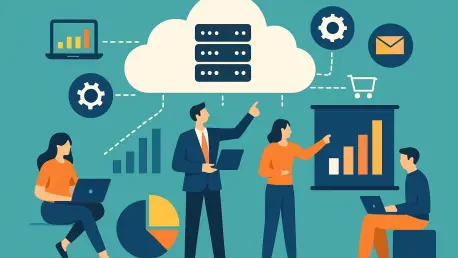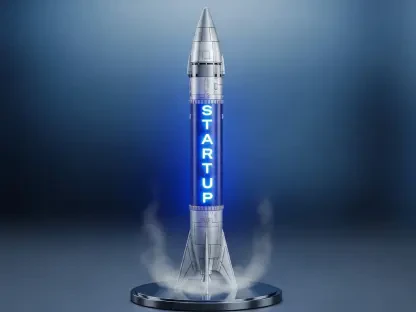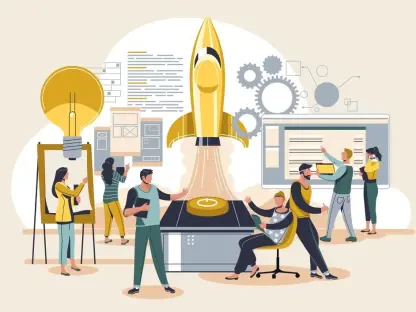Listen to the Article
It’s no secret that the SaaS market is facing headwinds. With customer budgets tightening and growth in traditional acquisition channels plateauing, scaling a business now demands a smarter, more diversified playbook.
Rather than betting everything on customer acquisition, leading SaaS firms like HubSpot, Shopify, and Slack have built resilient growth machines by balancing these complementary strategies. This article unpacks how these companies applied the framework and shows how you can tailor it to fuel sustainable, scalable growth in a no-growth market.
A Strategic Framework for SaaS Expansion
That’s where a step-by-step framework for SaaS expansion comes in. Based on patterns observed across the industry’s fastest-growing enterprises, the plan shared in this article focuses on five proven growth vectors: monetization, market expansion, moving upmarket, moving downmarket, and product expansion.:
Monetization: Convert users into income by testing and refining pricing strategies.
Expanding into new markets: Increase your customer reach both domestically and internationally by offering local currencies, languages, support from native speakers, and sales assistance.
Moving upmarket: Enhance your Annual Contract Value and progress to higher-tier markets by consolidating users into team bundles and enterprise agreements for entire organizations.
Moving downmarket: Launch and grow self-service sales to boost user sign-ups, then upsell through self-service options to increase revenue without needing a sales representative.
Product expansion: Provide additional SaaS offerings or a comprehensive platform solution to draw in new clients and enhance annual contract value from your existing customers.
If you’re aiming to compete with some of the fastest-growing startups, remember that you need to combine these elements to create the ideal SaaS growth plan.
From Freemium to Enterprise: HubSpot’s Strategic Climb
HubSpot developed and enhanced a SaaS model by incorporating additional value metrics (such as contacts), which CEO Brian Halligan elaborates on here. In 2012, the CRM powerhouse opened its first office outside of Cambridge, MA, named “DubSpot” in Dublin, to establish field sales and marketing efforts, followed by the launch of more global offices and the internationalization of its website.
Traditionally, HubSpot avoided entering the more competitive enterprise sector, but it shifted its focus upward with the introduction of the Enterprise Suite in 2018. Initially, the marketing giant was accessible only through sales conversations. With the introduction of sales and CRM tools in 2014, a freemium option was launched as part of a new product-led approach to market entry.
Last, but not least, in 2018, HubSpot diversified from its original marketing automation product to include sales, CRM, and HubSpot Connect, and later introduced the Service Hub.
How Shopify Built an Ecosystem to Power Global Entrepreneurs
Initially, Shopify operated with a fee based on a percentage, but in 2007, they evolved to introduce a tiered subscription pricing model that offered lower fees for higher sales volumes. Although the enterprise has had sellers globally for some time, its current tactical emphasis is on diversifying revenue sources beyond the US, Canada, the UK, and Australia.
As sellers on the platform expanded, Shopify naturally followed suit. In 2014, they introduced Shopify Plus to cater to these growing businesses and to attract larger enterprises. From the beginning, the global eCommerce engine was designed as a self-service platform for small and medium-sized businesses.
Finally, Shopify is broadening its reach to address more needs within the e-commerce sector, introducing Shopify Capital in 2016 and the Shopify Fulfillment Network in 2019.
From Team Chat to Workflow Hub: Slack’s Strategic Pivot
Slack introduced a tiered billing system based on the number of seats. This system features soft limits, such as a message cap, that gradually encourage an increase in average spending. With free accessibility and users in over 150 countries, the workplace messaging leader has excelled in its localization efforts.
Thanks to the seat-based pricing structure, Slack found itself moving upmarket. By January 2019, there were 575 customers paying over $100,000 per year, with this group representing 40% of their revenue. In 2017, they rolled out their ‘Enterprise Grid’ solution to better cater to larger teams.
From the beginning, Slack focused on refining its product to enhance virality following its public launch, which it could monetize through a freemium model. As the collaboration app pioneer expanded, its aim was to become the hub for workflows through the App Directory, Slack Fund, and Bot Kit.
Your SaaS Growth Roadmap Starts Here
With five growth areas to evaluate, where should you begin? Software firms like HubSpot, Shopify, and Slack didn’t achieve their success instantly—they progressively rolled out each new tactic, culminating in the ultimate five-step strategy. But what does the journey look like for your software firm? The research revealed that it consistently adheres to a similar pattern, based on whether the organization is product-led or sales-led.
How Product-Led SaaS Brands Scale Smartly
Product-led enterprises, such as Slack, initially focus on maximizing their user base before they begin to monetize it. Implementing Freemium pricing models, where anyone can register, allows these companies to connect with a worldwide audience from the outset. This approach optimizes their programs and applications for all traffic and users beyond their home market, which supports internationalization.
As their user base expands, product-led software firms typically achieve growth by selling team plans and enterprise agreements to ensure significant year-over-year revenue increases. This aligns well with the strategy of moving upmarket. Incorporating a sales-assisted approach alongside a product-led blueprint is referred to as B2B growth sales. This method can help you achieve these five growth milestones and beyond.
How Sales-Led SaaS Companies Win Big Deals
Sales-driven companies, like Salesforce, need to first figure out the pricing plan they can negotiate during sales. This includes understanding the value factors that their target market recognizes. This is key to making money. Next, the focus shifts to increasing the size of deals within that pricing model by targeting bigger accounts. This shows that they are moving into more competitive markets.
The Five Essentials Driving SaaS Growth Today
Scaling your SaaS business involves more than just having a strategic plan (no matter which tactics you choose). For your hard work to yield results, an intentional plan must be applied across all these aspects for optimal SaaS growth:
Attraction
The first stage is where your unique value proposition and overall business model come into effect. It also encompasses your pricing and subscription frameworks, including Freemium options and various deals to draw in customers. What will attract potential clients and retain your current ones? What do your target customers find valuable? Are you gaining referrals from existing clients (and promoting them on social media)?
Acquisition
How do you ensure your brand gains visibility? By focusing on SaaS marketing strategies, especially SEO content marketing, and sales tactics to improve lead acquisition. It pays close attention to customer acquisition costs. If these costs are higher than the revenue you earn from each customer, you should consider making changes.
Conversion
Your next aim is to enhance your conversion rates, correct? Ensure that the user experience is flawless, from clearly articulating your services and their benefits to providing a fast checkout process (without payment issues for any potential customer).
Retention
This approach focuses on keeping your customers satisfied and consistently delivering value to them and their businesses. It addresses voluntary churn rates, but you also need to consider involuntary churn, which can typically be mitigated by ensuring effective payment processing.
Tracking
Consistently monitoring your SaaS business metrics is essential to spotting weak points and optimizing your growth strategy. Pay close attention to customer acquisition costs, conversion rates, churn (both voluntary and involuntary), and average contract value. Use these insights to identify what’s working and where you need to adjust—whether it’s pricing, onboarding, or retention efforts. Establish a clear system to track these indicators regularly, so you can make data-driven decisions that keep your growth on course, even in a challenging market.
Conclusion
Scaling a SaaS business in a flat or contracting market isn’t about chasing more leads at any cost. It’s about working smarter: maximizing customer lifetime value, reducing churn, diversifying revenue streams, and deepening relationships with the customers you already have.
This five-step framework offers a practical roadmap to do just that. Whether you lean product-led, sales-led, or a hybrid of both, growth will come from a balanced mix of pricing innovation, international reach, upmarket moves, self-service options, and product expansion. Success won’t come from a single play, but by combining these strategies, as companies like HubSpot, Shopify, and Slack have done, you’ll be better positioned to thrive in this tougher SaaS landscape.









